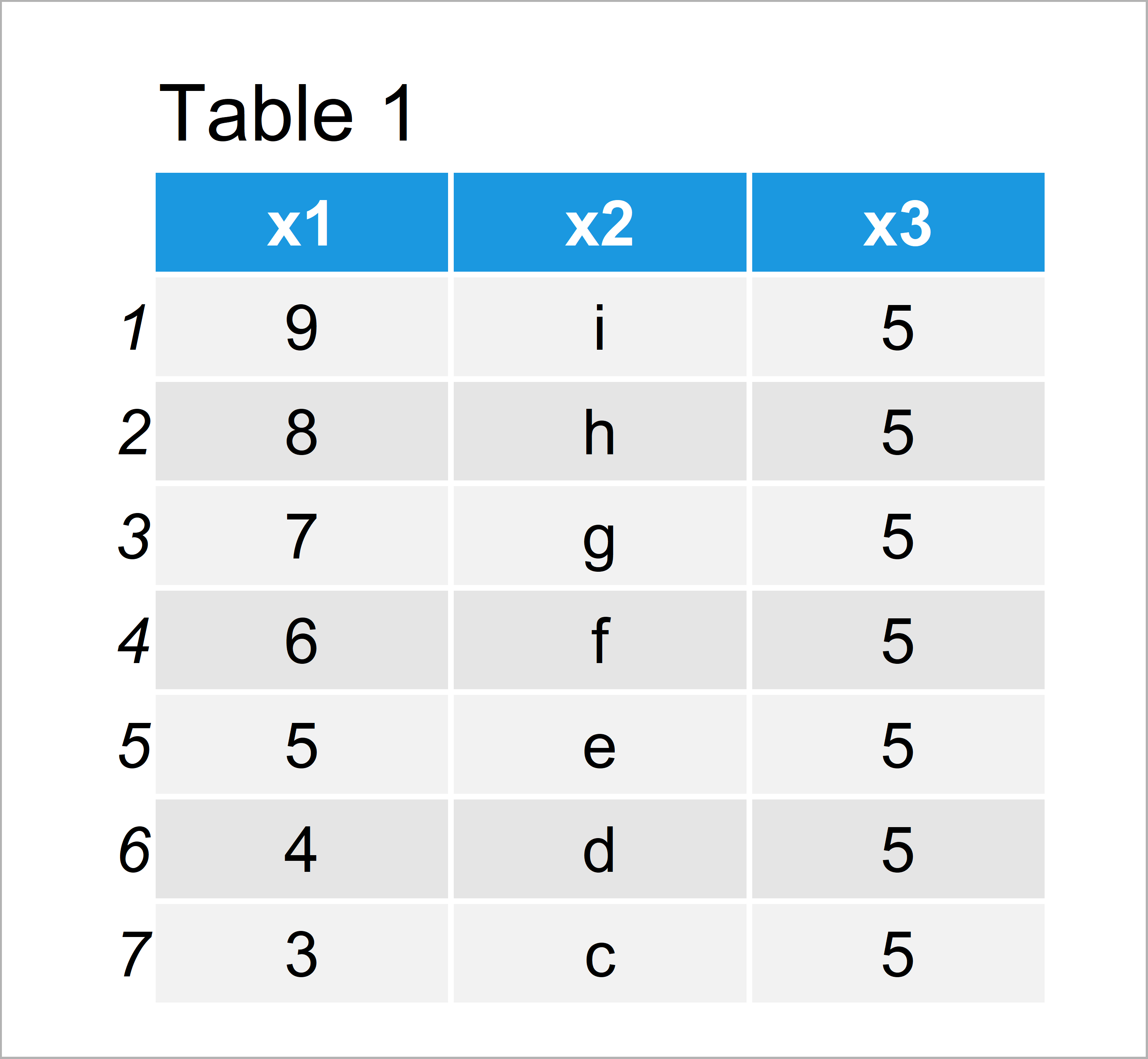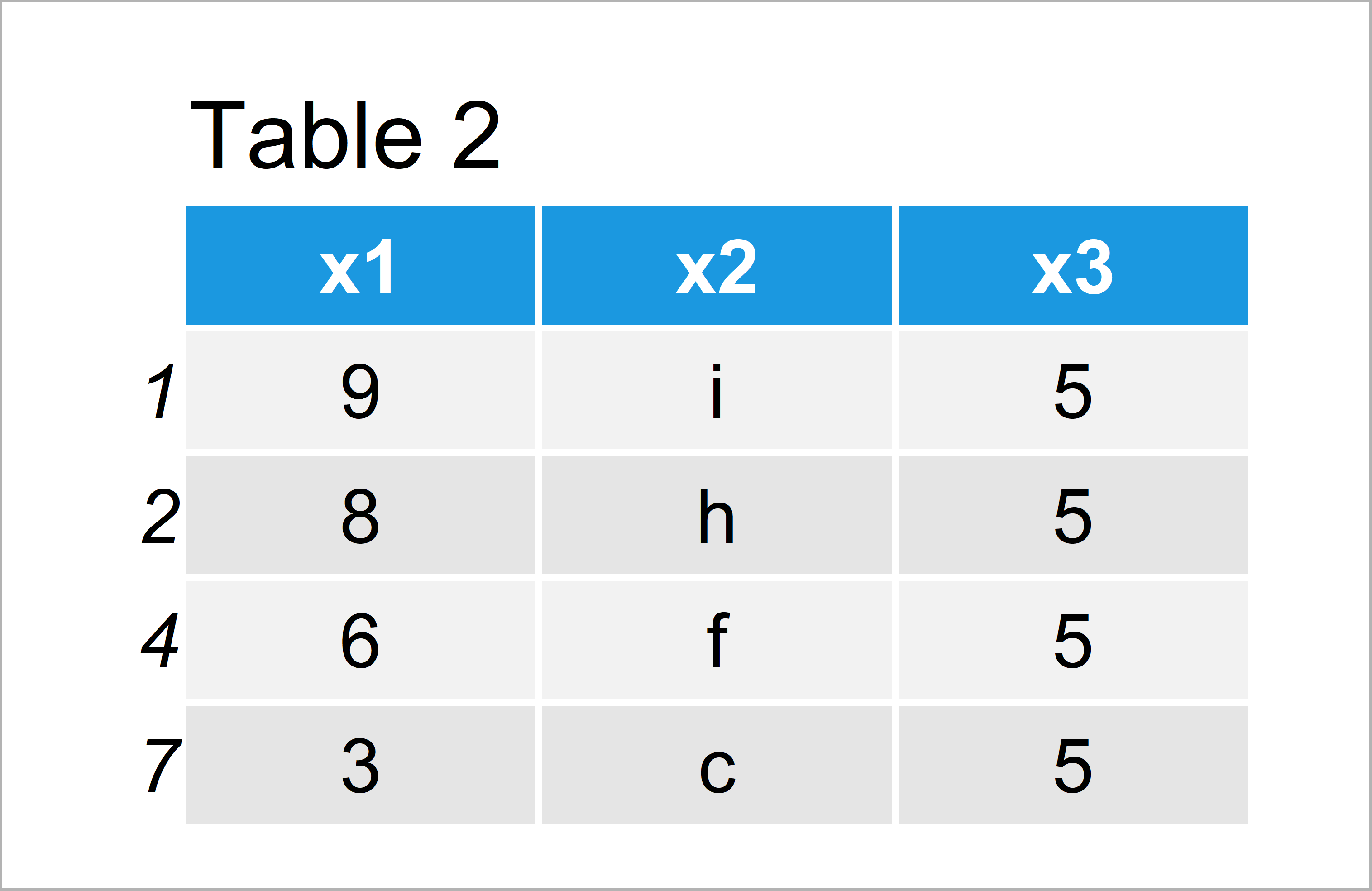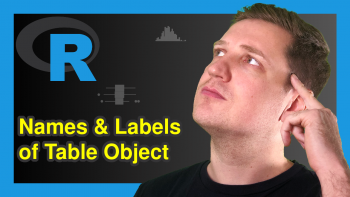Extract Data Frame Rows that do not Match Logical Condition in R (Example)
In this R tutorial you’ll learn how to select data frame rows that have no match to a certain condition.
The content of the tutorial is structured as follows:
So now the part you have been waiting for – the exemplifying R code.
Creation of Example Data
The data below will be used as basement for this R tutorial:
data <- data.frame(x1 = 9:3, # Creating data frame in R x2 = letters[9:3], x3 = 5) data # Printing data frame in R

Table 1 shows that our example data consists of seven rows and three columns.
Let’s also create a vector to which we will match a logical condition later on:
vec <- c("d", "e", "g") # Creating vector in R vec # Printing vector in R # [1] "d" "e" "g"
Our example vector simply contains the character values “d”, “e”, and “g”.
Example: Subset Data Frame Rows that do not Match Using ! and %in% Operators
In this section, I’ll illustrate how to extract only those data frame rows that do not match a certain logical condition.
More precisely, we’ll subset all rows where the values of the column x2 do not exist in our example vector vec.
For this, we can use the ! and $ operators as shown below:
data_new <- data[! data$x2 %in% vec, ] # Subsetting data frame data_new # Printing updated data frame in R

As you can see in Table 2, we have created a data frame without the three rows that have matched our logical condition.
Video, Further Resources & Summary
If you need more info on the R code of this article, you might have a look at the following video of my YouTube channel. I explain the R codes of this article in the video tutorial.
Furthermore, you might want to read the related tutorials which I have published on https://statisticsglobe.com/:
- Subset Data Frame Rows by Logical Condition
- Extract Subset of Data Frame Rows Containing NA
- Extract First N Rows of Data Frame
- Find Rows in First Data Frame that are not in Second
- All R Programming Examples
To summarize: In this article, I have shown how to keep only rows of a data frame that do not match a logical condition in R. Let me know in the comments below, in case you have further questions.






